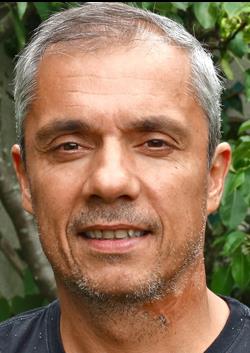Research Seminar of Prof. Luis Carlos from Universidade de Aveiro
Lecture Time: 14:00 on 25th November, 2016
Lecture Room: C502 of Science and Innovation Building
Lecture Title: Luminescent Nanothermometers : What's Next?

L. D. Carlos
Departamento de Fisica and CICECO-Aveiro Institute of Materials, Universidade de Aveiro,
3810-193 Aveiro, Portugal
lcarlos@ua.pt
Abstract
Luminescent ratiometric thermometers combining high spatial and temporal resolution at the micro and nanoscale, where the conventional methods are ineffective, have emerged over the last decade as an effervescent field of research, essentially motivated by their potential applications in nanotechnology, photonics and biomedicine [1]. Among the distinct luminescent thermal probes, Ln3+-based materials play a central role in the field due to their unique thermometric response and intriguing emission features (e.g., high quantum yield, narrow bandwidth, long-lived emission, large Stokes shifts, and ligand-dependent luminescence sensitization).
One of the main challenge that is currently facing scientists in the field is to use luminescent thermometry for unveiling thermometers' local surrounding properties, as, for instance, heat transfer in heater-thermometer nanoplatforms [2] and the absorption coefficient and thermal diffusivity of tissues in small animals [3].
This lecture presents a general revision of the work done in the last couple of years on ratiometric luminescent nanothermometers, emphasizing a third example along of that line: the measurement of the instantaneous ballistic velocity of Brownian nanocrystals suspended in both aqueous and organic solvents based on upconversion nanothermometry [4]. Brownian motion is one of the most fascinating phenomena in nature, with implications in many fields of science and even economics. Nanofluids are viable substitutes for conventional fluids, whose thermal properties are relatively poor, which prevents the development and miniaturization of sustainable thermal systems. Understanding the Brownian motion in nanofluids is crucial to improve the knowledge on their thermal conductivity and convective heat and mass transfer.
[1] C. D. S. Brites, A. Millan, L. D. Carlos, in Handbook on the Physics and Chemistry of Rare Earths, J.-C. Bunzli, V. K. Pecharsky, Eds., Amsterdam: Elsevier Science B.V., Vol. 49 (2016), 339.
[2] R. Piñol, C. D. S. Brites, R. Bustamante, A. Martinez, N. J. O. Silva, J. L. Murillo, R. Cases, J. Carrey, C. Estepa, C. Sosa, F. Palacio, L. D. Carlos, A. Millan, ACS Nano 9 (2015) 3134
[3] E. C. Ximendes, W. Q. Santos, U. Rocha, U. K. Kagola, F. Sanz-Rodriguez, N. Fernandez, A. da Silva Gouveia-Neto, D. Bravo, A. Martin Domingo, B. del Rosal, C. D. S. Brites, L. D. Carlos, D. Jaque, C. Jacinto, Nano Lett. 16 (2016) 1695.
[4] C. D. S. Brites, X. Xie, M. L. Debasu, X. Qin, R. Chen, W. Huang, J. Rocha, X. Liu, L. D. Carlos, Nature Nanotech. 11 (2016) 851.
Biography
Luis Antonio Dias Carlos got his Ph.D. in physics from the University of Évora, Portugal, in 1995 working on photoluminescence of polymer electrolytes incorporating lanthanide salts. Currently, he is Full Professor in the Department of Physics at the University of Aveiro and vice-director of the CICECO-Aveiro Institute of Materials (Portugal). He is member of the Lisbon Academy of Sciences and of the Brazilian Academy of Sciences. His current research interests include luminescent nanothermometers, luminescent solar concentrators, organic-inorganic hybrids for green photonics (solid-state lighting and integrated optics), and luminescent/magnetic nanoparticles, as new probes for multimodal imaging. He has published around 390 papers and 6 patents, which have received ca. 11,200 citations (Hirsch' index h of 54), and co-guest editor of a RSC book on Nanoscale Thermometry (Nanoscience & Nanotechnology series) and special issues of the Journal of Sol-Gel Science and Technology (2010) and of the Journal of Luminescence (2015).
